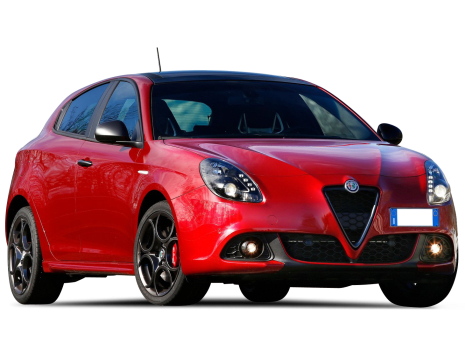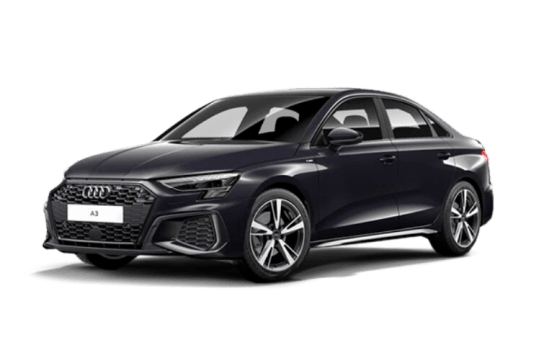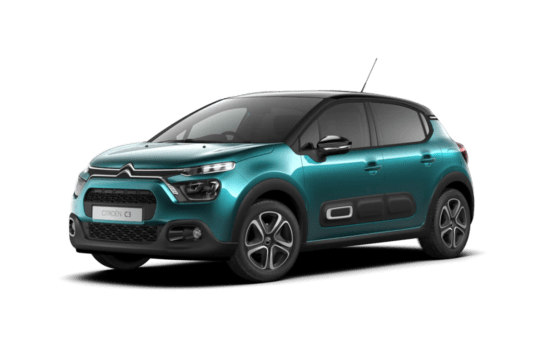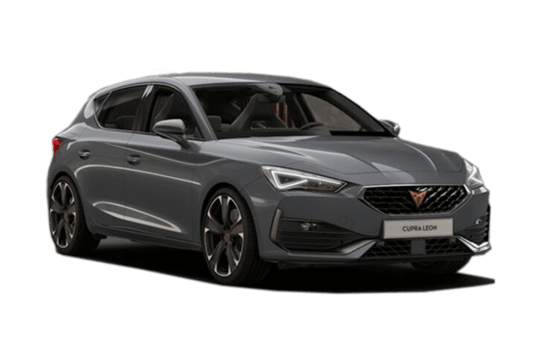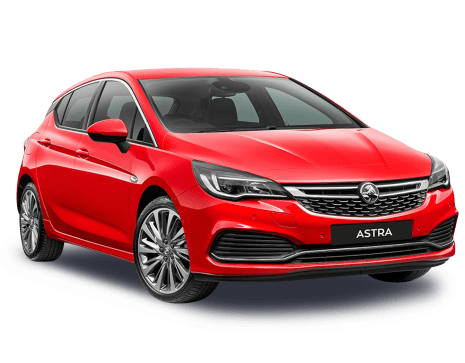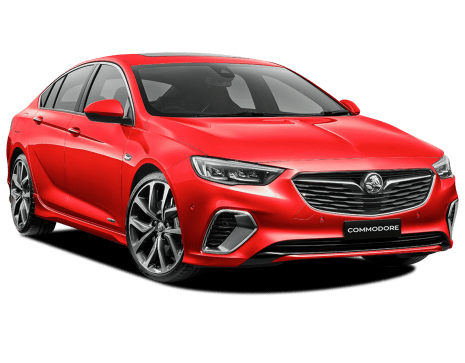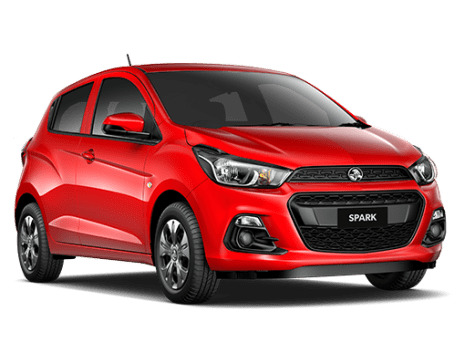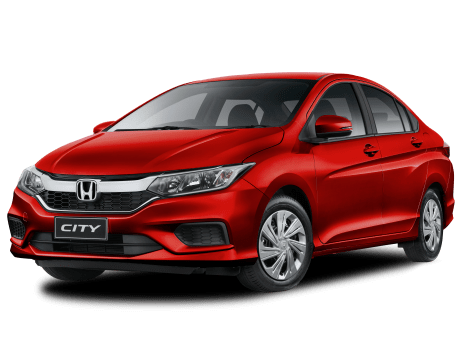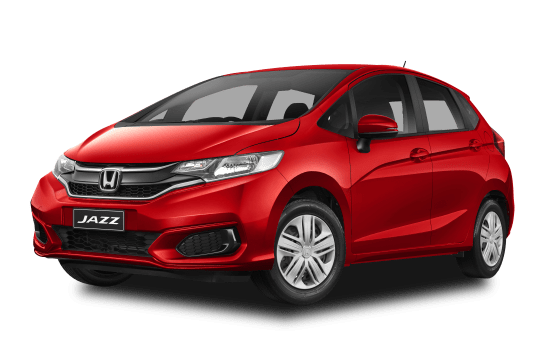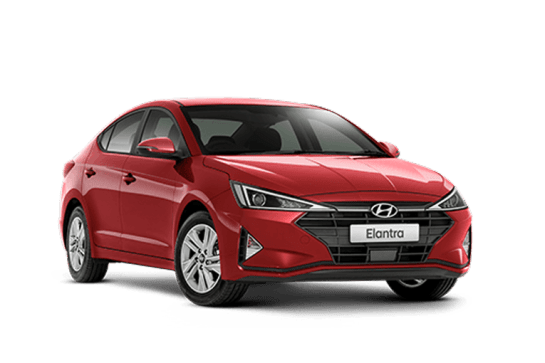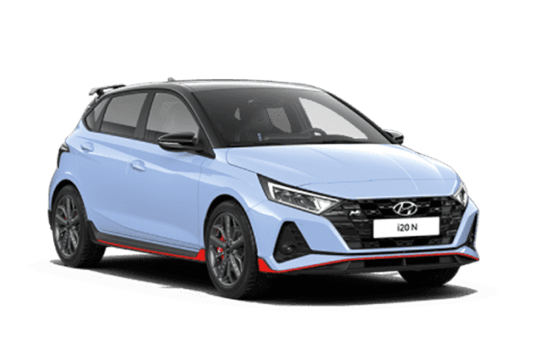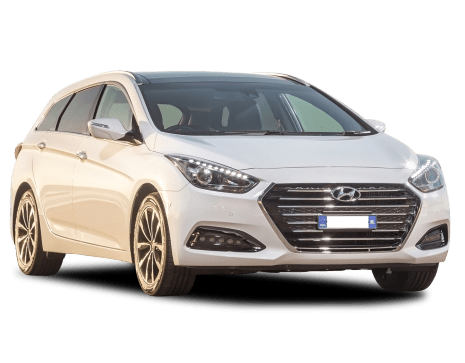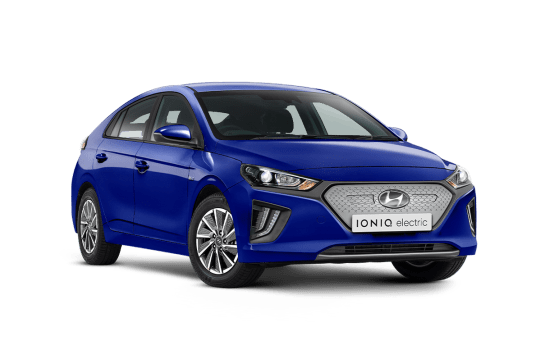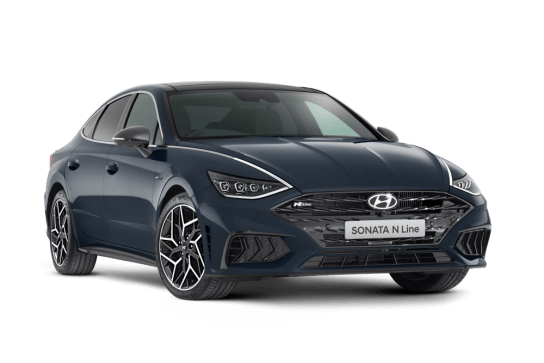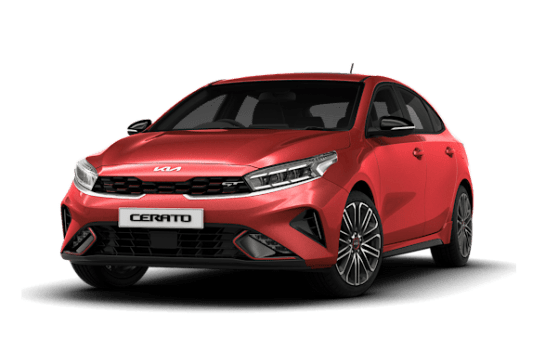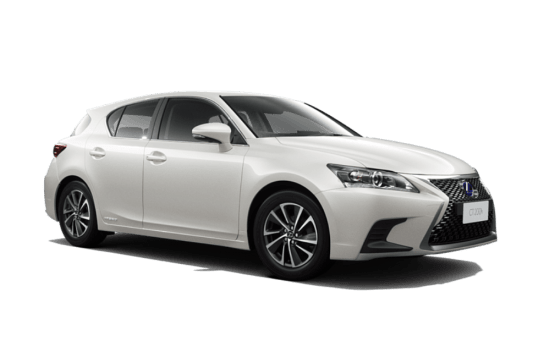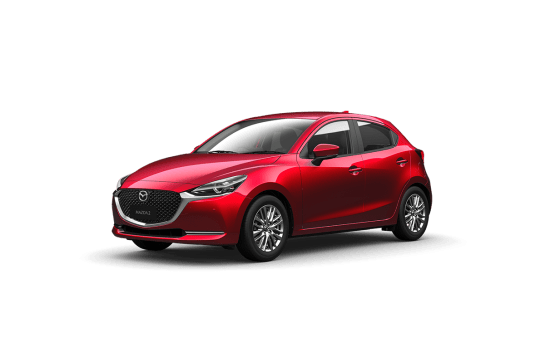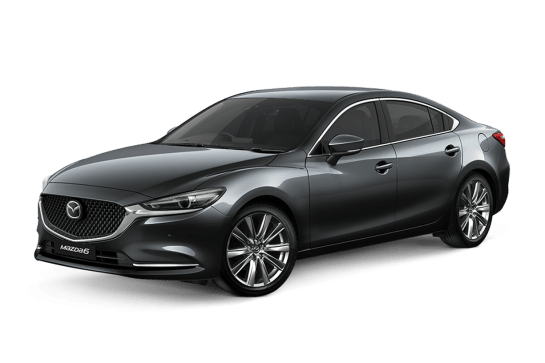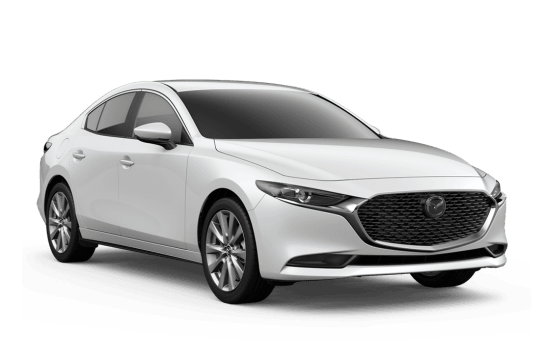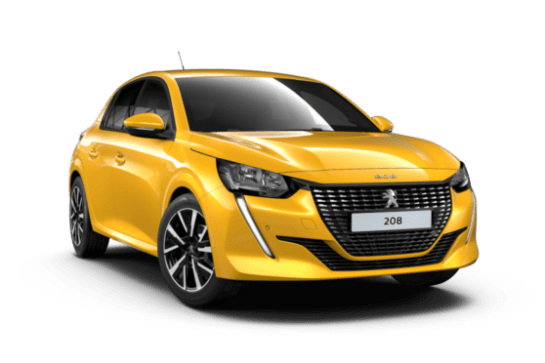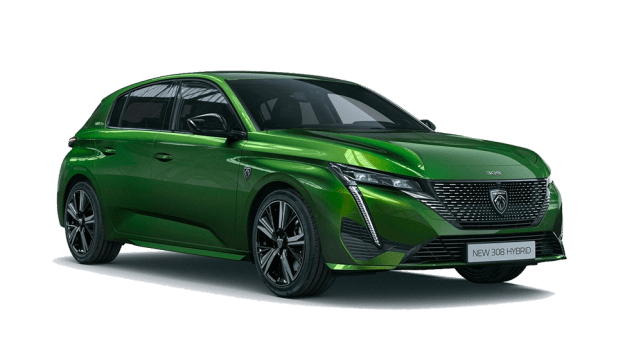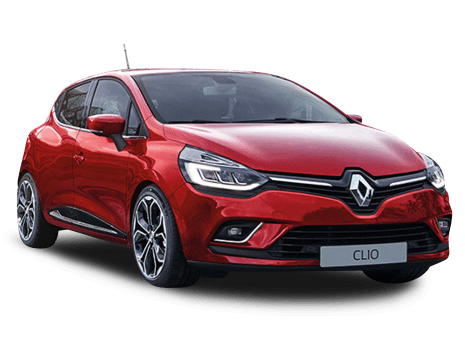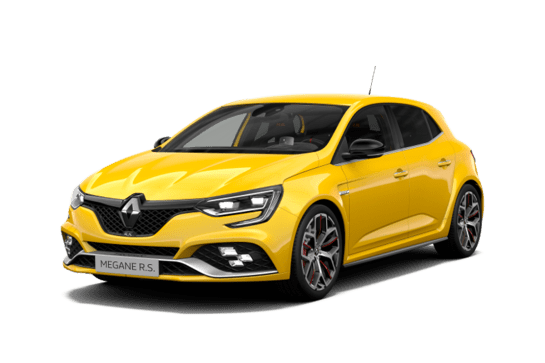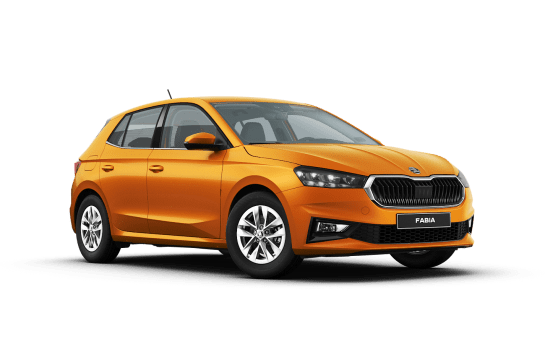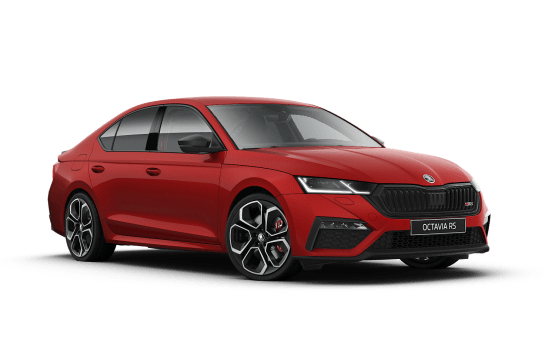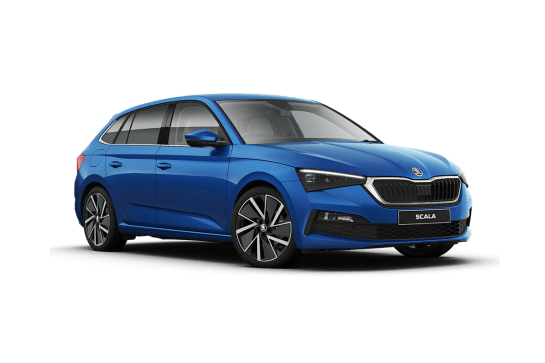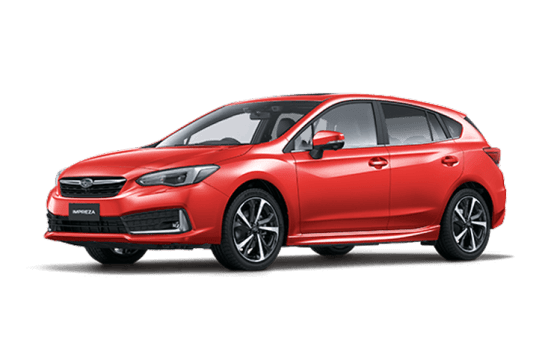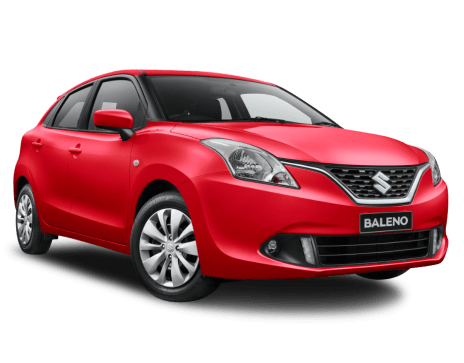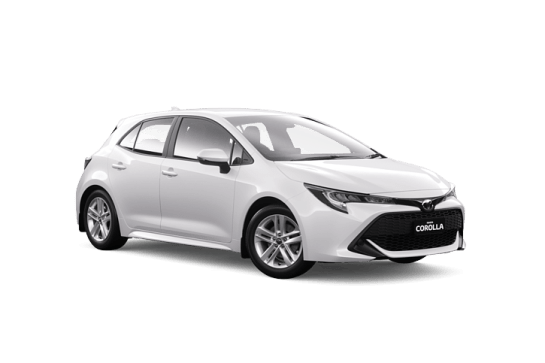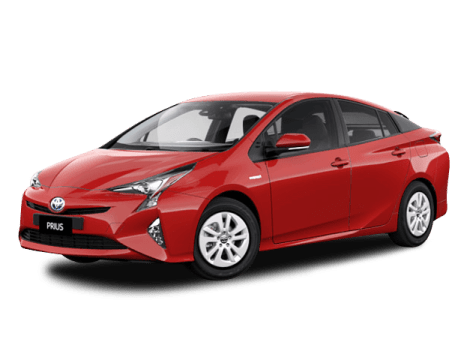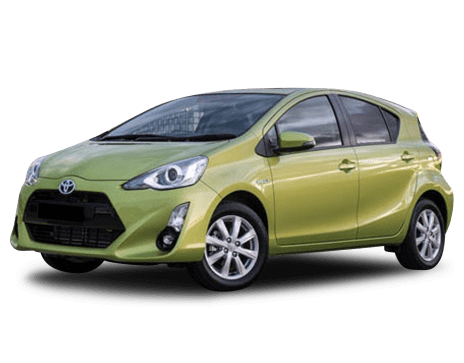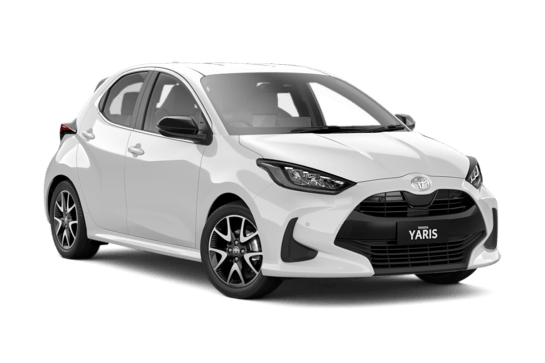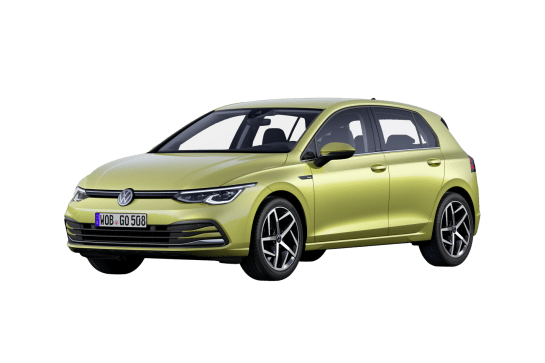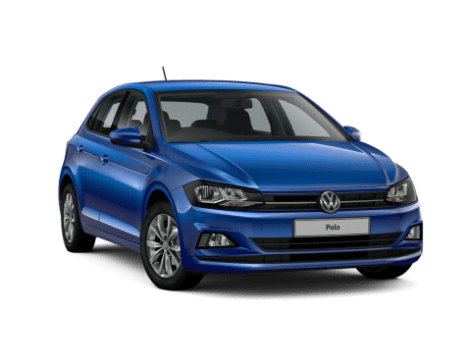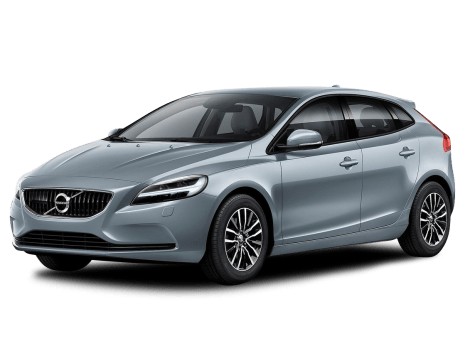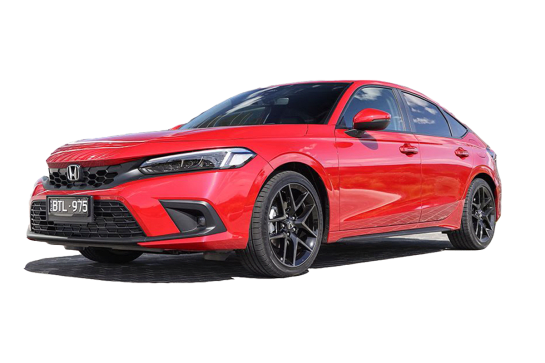
Honda Civic VS Toyota Camry
Honda Civic
Likes
- Great interior
- Lovely chassis
- Excellent engine
Dislikes
- Missing some safety gear
- Tight access to boot space
- Old media software
Toyota Camry
Likes
- Still looks handsome inside and out
- Drives beautifully in most scenarios
- Well-rounded features list
Dislikes
- More expensive base model pricing
- Drinks premium petrol only
- Adaptive cruise control needs work
Summary
Honda Civic
The Honda Civic's 10th generation is drawing to an end. Well, I say that, but there's still a pretty solid chance that the 11th generation won't quite be here this time next year.
I make the point because we've already seen a "prototype" for series 11 of the Honda Civic Story, but also because we won't actually get the car we've seen – the sedan. Just 20 per cent of Civic sales go to the booted version and then you have to merge that data with the rise of SUVs, both with Honda buyers and the market at large.
Things is, I think the sedan is the better of two for a variety of reasons which I will explain below. I also think the Civic, despite its advancing "age" (four years isn't really that long in the current climate) is still a fairly sensible choice among its peers, which include some serious competition.
| Safety rating | |
|---|---|
| Engine Type | 1.5L turbo |
| Fuel Type | Regular Unleaded Petrol |
| Fuel Efficiency | 6L/100km |
| Seating | 5 seats |
Toyota Camry
The Toyota Camry is one of the few cars that really needs no introduction. It's been on our shores for 41 years and has proven itself to be steadfastly popular, enough for Toyota to launch a ninth-generation version.
The entry grade Ascent is one of the few 'base-models' still available for the mid-sized sedan segment and offers an upgraded hybrid powertrain and transmission, new tech and a fresh take on its design.
Old fans will love it and in this review we discover if there's something for families to get excited about.
Read more about
- Toyota's new sports car takes shape in fresh renders: 2026 Toyota MR2 performance hero could be a potent hybrid GR Corolla mash-up
- 'We never say told you so': Toyota says the market has spoken on electric cars as EV sales flatline in Australia, while petrol-hybrids like the Toyota RAV4, Corolla Cross and Kluger soar
- Is this Toyota'a $32,000 electric SUV? Japanese giant and Suzuki to team up for bZ1X to take the fight to the MG4 and BYD Atto 3: Reports
| Safety rating | |
|---|---|
| Engine Type | 2.5L |
| Fuel Type | 95 Ron |
| Fuel Efficiency | 4L/100km |
| Seating | 5 seats |
Verdict
Honda Civic7.3/10
As a car to drive, the Honda Civic feels great. It had a good start, but the later addition of the turbo 1.5 and the continuous honing of the chassis, steering and driveline – an endearing, unheralded trait that Mazda and Honda do so well – has taken what was a solid car and turned it into one I'd genuinely consider owning, even in this wild orange colour.
What it doesn't have is a full suite of safety systems, which is a real shame, because its main rivals do. Some of us are happy to forego things such as reverse cross-traffic alert and some are not. If you can, the Civic sedan should be in the reckoning. And the clock is ticking.
Toyota Camry8.8/10
Ah, gotta love a sedan that knows its audience and the ninth-gen Toyota Camry Ascent proves once again why it’s a popular choice.
On top of the space and practicality, you get a shiny new design and technology. Overall the Camry Ascent is a well-rounded base-model - what’s not to love?
Design
Honda Civic
Making fun of the Civic's over-supply of angles and lines is really very easy, so for once I'll refrain. Partly because the sedan is better than the hatch in this respect and also because – somehow – I have become quite fond of its wacky face. The sedan's profile is also more flowing and, with all the RS piano black and extra aggro (which ironically means yet more lines and angles), it sat much more happily in my camera lens than before. I wonder if the Civic's controversial looks have aged well in the same way Chris Bangle BMWs have? Because we're all suddenly pretty fond of those now, aren't we?
My changed opinion is bound to infuriate Honda's designers who have cleaned up the Civic for its next version. At this point I should mention that the sedan is on its last legs here in Australia – we won't be getting the next one.
The interior is as good-looking as it is practical. I still don't like the angles of the gauges in the left and right sections of the dash, but the central digital dash section is really good and easy on the eye. The RS picks up some subtle features like the strip of chequered flag fabric on the seats. It's a nice, clean look and I like the use of metallic materials on the climate controls and the stereo. It's a very calm interior, quite a contrast to the exterior.
Toyota Camry
There is a strong 'taxi'-association with the Camry because of how popular it is as a commercial fleet car and while the design has been updated and modernised, that vibe still remains. It's a Camry, after all.
But the new tapered nose with its slim LED headlights look sharper than the previous model and the rear slopes into a neat spoiler that accentuates a sharper rear end.
The new design looks far more modern and dare I say it: sporty.
A lot of the changes are in the cabin where the Camry benefits from a completely restyled dashboard that looks sleek and stylish, with the tech screens integrated into the panelling.
The cockpit still feels very driver-oriented, which is always appreciated, but now not at the expense of the front passenger.
The cloth seats look much nicer than the standard basic stuff you usually get and there are enough tactile dash and door panels to make it feel cosy, despite it's soft-touch points still looking too plasticky.
The overall feel for the cabin is one that is pleasant and well-built, although cloth seats always give me anxiety when kids are around.
Practicality
Honda Civic
The Civic's cabin is swimming in space and and filled with comfortable seats and lots of storage.
The back seat is super-spacious as it has been forever. Having driven the i30 Sedan last week, I'm having difficulty splitting the two for legroom and lounging space. Where the Civic loses out – and it's close – is in rear headroom.
There are four cupholders and bottle holders and a massive central bin between the front seats, big enough to conceal the massive new PlayStation 5 (okay, maybe not that big, but it it certainly looks big enough).
The boot holds a gigantic-for-a-small sedan 519 litres with the seats in place. Honda doesn't supply a total figure with the seats down, but it will be a lot. The opening for the bootlid is a little tight, so don't get too excited at Ikea.
Toyota Camry
Sedans tend to fly under the radar when people think of cabin space but that's a mistake. Head- and legroom in both rows will make taller occupants very happy and the transmission tunnel isn't massive, so middle seaters will still be able to get comfortable.
Despite being a low-profile car, access is easy enough and it's only the sloping roofline at the rear that might make you bump your head as you get in.
Seat comfort is excellent with thick padding and cushioning to be enjoyed. The front seats are manually adjustable but lack lumbar support, which you'll notice on a longer trip.
The window sills don't sit too high, so my seven-year old had a good view this week but the cloth seats have upped the anxiety as he tends to be messy. He also loves having directional air vents and that keeps him happy on hotter days.
Storage is great for the class with a 7.0L middle console, large glovebox that can hold a manual and other bits, two map pockets, four cupholders, four drink bottle holders, a sunglasses holder, and a functional centre console tray that has multiple cubbies to delight those that travel with lots of stuff.
The boot capacity hasn’t changed and sits at a large 524L capacity, which is decent for a sedan. The boot aperture isn’t too narrow either, so it's easy to access items that roll to the back. The rear seat has a 60/40 split, to open up storage as well.
The boot has a powered boot release that can be accessed via the key fob and while you have to manually close it, it's a super light lid to operate.
Technology feels well-rounded now with the upgrades and the touchscreen multimedia system sports the same system you'll find in Lexus models, which is far superior to the older Toyota software. Basically, it's simple to use and looks good, which is a great combo.
The phone mirroring apps are now wireless and that means one less cable to worry about and charging options are good with five USB-C ports (3/2), and a 12-volt socket but you do miss out on a wireless charging pad at this grade level.
Basically, the Camry now offers better technology and style but the practicality of the cabin remains at an all time high.
Price and features
Honda Civic
The Civic RS price has slowly crept north, along with the prices of its mostly Korean rivals, now at $34,090. It's a fair bit more than the Ford Focus ST-Line, but you can't get a sedan version of that and infuriatingly neither can you get the wagon.
The RS has 18-inch alloys, a 10-speaker stereo, faux leather seats (nothing wrong with that), auto LED headlights and DRLs, dual-zone climate control, reversing camera, front and rear parking sensors, keyless entry and start, electric driver's seat, auto headlights and wipers and a space-saver spare.
The 7.0-inch matte-finished touchscreen runs Honda's homage-to-the-80s software package that is bolstered by the presence of Apple CarPlay and Android Auto. It also has DAB, which is a nice touch, but it is missing built-in sat nav, which most of its rivals have.
Toyota Camry
There are now only three model grades available for the Camry and they are all offered exclusively with a hybrid powertrain. The model on test for this review is the enrtry-grade Ascent.
With the hybrid powertrain and new tech, the entry price is $4939 dearer than before and it now carries a $39,990 before on-road costs price tag. Of the mainstream medium sedan rivals, only the ageing Mazda6 Sport sedan is more affordable at $36,290 MSRP.
What’s interesting to note is that some of its other rivals, the new Honda Accord e:HEV RS and Skoda Superb, are only offered in one highly-specified grade and they come with corresponding price points. The Accord sits at $64,900 drive-away, and the Superb at $69,990 drive-away. So, if you’re in the market for a sedan, there is a good sense of value for the Camry at the moment, despite its price hike.
Standard equipment for the new Camry includes cloth upholstery, an 8.0-inch touchscreen multimedia system with satellite navigation, Toyota Connect app, wireless Apple CarPlay and Android Auto, dual-zone climate control, keyless entry and start, 7.0-inch digital instrument cluster, digital radio and Bluetooth connectivity.
Practical features include 17-inch alloy wheels, temporary spare tyre, power-release boot lid, and manual release buttons for the rear seats in the boot area.
Strangely though, the base model still misses out on rain-sensing windscreen wipers for some reason.
Under the bonnet
Honda Civic
The 1.5-litre four-cylinder has a light pressure turbo bolted in to produce 127kW at 5500rpm and 220Nm between 1700-5500rpm. Those numbers are 23kW and 46Nm up on the 1.8-litre, which goes without the turbo.
You can let the continuously variable transmission (CVT) look after the turning of the front wheels or if you're feeling sporty – not an unreasonable expectation if you've picked the RS – you can use the paddle shifters which tell the computer to put some fake gears into the box for you to shift up and down.
Toyota Camry
The 2025 Camry has the new and improved hybrid system that Toyota is rolling out and a redesigned electronic continuously variable transmission (CVT) – both changes are welcome to the 2.5L four-cylinder engine.
This combo produces up to 170kW of power, which is up from the previous model but the torque remains the same at 221Nm.
Efficiency
Honda Civic
Honda's official testing suggets a combined cycle figure of 6.3L/100km which is lower than the 1.8-litre, a nice bonus when you have all that extra power to play with. My week with the Civic was mostly suburb-bound and I scored a respectable (indicated) 8.2L/100km.
Toyota Camry
The outgoing model had an excellent combined fuel cycle figure already but the new hybrid system improves it again to just 4.0L/100km. With the 50L fuel tank, that gives you a theoretical driving range of up to 1250km. Outstanding for a family car!
After doing 803km this week and those kilometres being mostly open-road driving, which is where hybrids are at their least efficient, my real-world figure was 4.4L, which is still great. Expect it to be even better in the city.
Driving
Honda Civic
This iteration of the Civic has been with us for a while now. I wasn't absolutely sure about it when I first drove it – that was partly down to the less-than-stellar 1.8 and an at-times doughy CVT.
Over the years I've been very lucky to drop my posterior into two, three or even four Civics per year. During that time I have noted some subtle changes, such as the CVT's more attentive nature and the progressive improvement of the ride on particularly bumpy surfaces, such as Sydney's concreted arterial roads.
The RS itself is no different mechanically to the other 1.5-litre turbo-engined cars in the range (it's an entire engine's worth of power short of the madcap Type R) but over the years, that has meant good things. I've always liked the low-set driving position, it's lower than many hot hatches. You sit in and down in the Civic and it feels quite sporty.
Turn the wheel and it's all very positive, with a very pleasant ride and handling balance. The CVT is still a CVT but, especially in the turbo, it has more grab off the line and doesn't indulge in flaring as you'd find in a Subaru, turbo or not. It's actually fun to drive, especially if you draft in the paddles to do some work.
But it's also a car you need never provoke to enjoy driving. The comfortable ride and secure handling make it the kind of car anyone can like. The steering wheel is just right, the controls all feel really nice to use and touch. There's nothing particularly flashy about the Civic apart from its looks, but it's such a comfortable car with a super-solid feel to its engineering.
The main advantage of the turbo engine is that it doesn't have to work as hard as the 1.8 to keep the Civic moving. The extra torque is always there and makes it a much more relaxed car around town than the 1.8-powered Civics, while giving you the extra grunt to push out into traffic, or pull off a tricky overtake.
Toyota Camry
Toyota really does the hybrid thing well – the engine and electric motor handle duties effortlessly between them, with minimal fuss like noise or gear changes.
The well of power feels deep enough to really let it loose on the highway, if need be, but that also makes it zippy in the city.
This is sure-footed in most scenarios and I like the comfort that brings to the driving.
The steering is direct enough to feel responsive but not sporty. It handles corners well and suspension is well-tuned, so you don’t wince when you hit bumps.
Being set low and having average-sized windows means visibility can be a little hampered when heading down a hill as you bob and weave to see around the rear-view mirror and thick pillars.
The Camry is 4920mm long (33mm longer than previous gen) and it fills out a space. With it's low profile, you have to be careful not to scrape the bottom on anything but it’s still relatively nimble in a car park because of its tight steering and clear 360-degree camera system.
Safety
Honda Civic
All Civics come with six airbags, ABS, stability and traction controls.
The Honda Sense package adds forward collision warning, forward AEB (high and low speed), lane departure warning and lane keep assist.
One of my favourite Honda quirks is LaneWatch. Flick the indicator for a left-hand turn and the media screen displays the output of a camera pointed down the left-hand side of the car. It's still too bright at night, but you can disable it or tap the button on the end of the indicator stalk to cancel it.
You also get two ISOFIX anchors and three top-tether points.
The Civic sedan was last assessed by ANCAP in April 2017 and scored five stars.
Toyota Camry
The Camry has a brand-spanking new five-star ANCAP safety rating from this year (2024) and now sports eight airbags, including a front-centre airbag.
The safety features list is impressively long with all of the biggies included like blind spot monitoring, SOS call button, driver attention alert, safe exit warning, rear occupant alert, forward collision warning, LED daytime running lights, rear cross-traffic alert, lane departure alert, lane keeping aid, traffic sign recognition, intelligent seatbelt warning, a 360-degree view camera system, and front and rear parking sensors.
The adaptive cruise control has a new cornering feature, which will slow your speed down in corners but it didn't always activate and when it did, it slowed down too dramatically to make the system feel smooth to use.
All other systems feel well-tuned for daily driving.
There are ISOFIX child-seat mounts on the outboard seats and three top-tether anchor points but two seats will fit best.
The new Camry has auto emergency braking (AEB) with car, pedestrian, motorcycle, cyclist and backover function, which is operational from 5.0 to 80km/h (up to 180km/h for car).
Ownership
Honda Civic
Hondas ship with a five-year/unlimited kilometre warranty, which is competitive as more and more manufacturers consider this a minimum.
The "Tailored Servicing" program caps nine of the first 10 services at $281, with just one service jumping to $310. That's reasonable value for a turbo engine, except servicing is every 12 months or 10,000km. That means more than one trip per year to the dealer if you drive more than 10,000km per year.
Toyota Camry
The Camry comes with a five-year/unlimited kilometre warranty but that can be upped to seven years if you exclusively service with Toyota and on schedule, which is good for the class.
You get five-years capped-priced servicing at just $255 per service, which is extremely reasonable and intervals are good at every 12-months or 15,000km, whichever occurs first.
The Camry likes the good stuff though and only drinks a minimum of 95 RON unleaded petrol.



